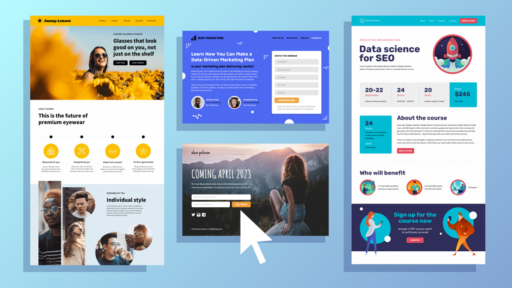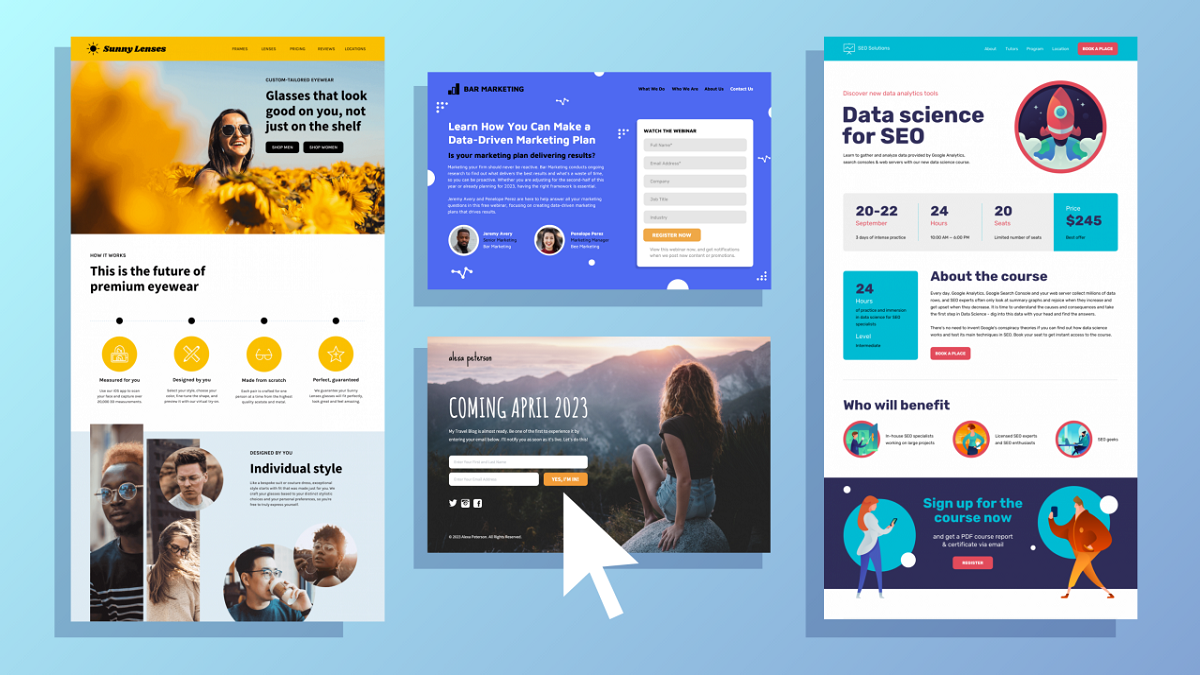Landing pages are critical components in digital marketing campaigns. A well-designed landing page can drive conversions by encouraging visitors to take a specific action—whether that’s signing up for a newsletter, making a purchase, or downloading a guide. To create landing pages that convert effectively, it’s important to consider several key factors. In this blog, we’ll explore strategies and best practices that can help you optimize your landing pages for higher conversion rates.
1. Define a Clear Goal
The first step to creating an effective landing page is defining a clear and specific goal. Ask yourself: What action do I want my visitors to take? This action might include filling out a form, subscribing to a newsletter, or buying a product. Once you’ve determined the goal, you can tailor every element of your landing page toward encouraging that single action.
For example, if your goal is to collect email sign-ups, your landing page should prominently feature a sign-up form with a compelling call-to-action (CTA) that encourages visitors to input their email addresses. Every section of your landing page should work to guide visitors toward that singular purpose without distractions.
2. Craft a Compelling Headline
The headline is the first thing visitors see when they land on your page. It should be clear, attention-grabbing, and relevant to the visitor’s needs or interests. A powerful headline can capture interest and motivate visitors to stay and explore further.
To craft a compelling headline, focus on highlighting the benefit your visitors will receive. For example, if you’re offering a free eBook, a headline like “Get Your Free Guide to Boosting Productivity” immediately conveys value and appeals to the audience’s desires.
3. Keep Your Design Simple and Focused
A clean and simple design is essential for high-converting landing pages. The design should be free of clutter, and the layout should focus on directing the visitor’s attention toward the primary CTA. Overloading the page with too much information, flashy graphics, or multiple CTAs can confuse visitors and reduce conversion rates.
To achieve a simple design:
- Use white space effectively to separate content and make the page easier to read.
- Choose colors that align with your brand but also create contrast to make your CTA stand out.
- Limit navigation options so visitors aren’t tempted to leave the page.
4. Write Concise and Engaging Copy
The copy on your landing page should be concise, persuasive, and to the point. Visitors typically skim rather than read entire pages, so it’s essential to communicate the key points quickly and effectively.
Here are some tips for writing engaging copy:
- Highlight the benefits of your product or service, not just the features.
- Use bullet points or short paragraphs to break up the text and make it easier to digest.
- Include testimonials or success stories to build trust and credibility.
Your copy should answer the question, “What’s in it for me?” Visitors need to understand immediately how they will benefit by taking action.
5. Use Strong Call-to-Actions (CTAs)
Your CTA is one of the most important elements on your landing page. It needs to be clear, direct, and actionable. Instead of using generic phrases like “Submit” or “Click Here,” try to use more specific and benefit-driven CTAs such as “Get My Free Guide” or “Start My Free Trial.”
Consider the following best practices for CTAs:
- Use contrasting colors to make your CTA button stand out.
- Place the CTA button prominently above the fold, where it’s visible without scrolling.
- Repeat the CTA in various places throughout the page, especially in longer landing pages.
6. Use Visuals Wisely
Images, videos, and other visuals can enhance your landing page by making it more engaging and visually appealing. However, they should support the message and goal of the page rather than act as distractions.
Consider adding:
- Product images or videos: Show visitors what they will get or how the product works.
- Hero images: A large, impactful image at the top of the page can grab attention and set the tone.
- Explainer videos: Short videos can be an effective way to convey complex information quickly and clearly.
Make sure that your visuals are optimized for fast loading times, as slow page speeds can lead to higher bounce rates and lower conversions.
7. Incorporate Social Proof
Social proof can significantly boost the credibility of your landing page and encourage visitors to take action. Examples of social proof include:
- Customer testimonials
- Case studies
- Trust badges or certifications
- Reviews and ratings
When visitors see that others have had positive experiences with your product or service, they are more likely to trust your brand and convert.
8. Optimize for Mobile
With more users accessing websites via mobile devices, it’s essential to ensure your landing page is mobile-friendly. Mobile users should have a seamless experience with fast loading times, responsive design, and easy-to-click buttons.
Here are some mobile optimization tips:
- Use larger fonts and buttons that are easy to tap on smaller screens.
- Ensure that your images and layout adjust properly for different screen sizes.
- Simplify the form fields so users can quickly complete them on a mobile device.
9. A/B Testing and Analytics
Continuous improvement is key to maximizing your landing page’s performance. A/B testing allows you to experiment with different elements of the page, such as the headline, CTA, or color scheme, to see which version drives higher conversions.
Tools like Google Analytics and heatmaps can provide valuable insights into how visitors interact with your landing page. You can track metrics such as bounce rate, time on page, and conversion rate to identify areas for improvement.
10. Build Trust with Security Features
Visitors need to feel confident that their information is safe when submitting a form or making a purchase. Include security badges or trust seals (such as SSL certificates) to show that your landing page is secure.
Additionally, displaying a privacy policy or a statement about how their data will be used can further reassure visitors and reduce hesitation.





